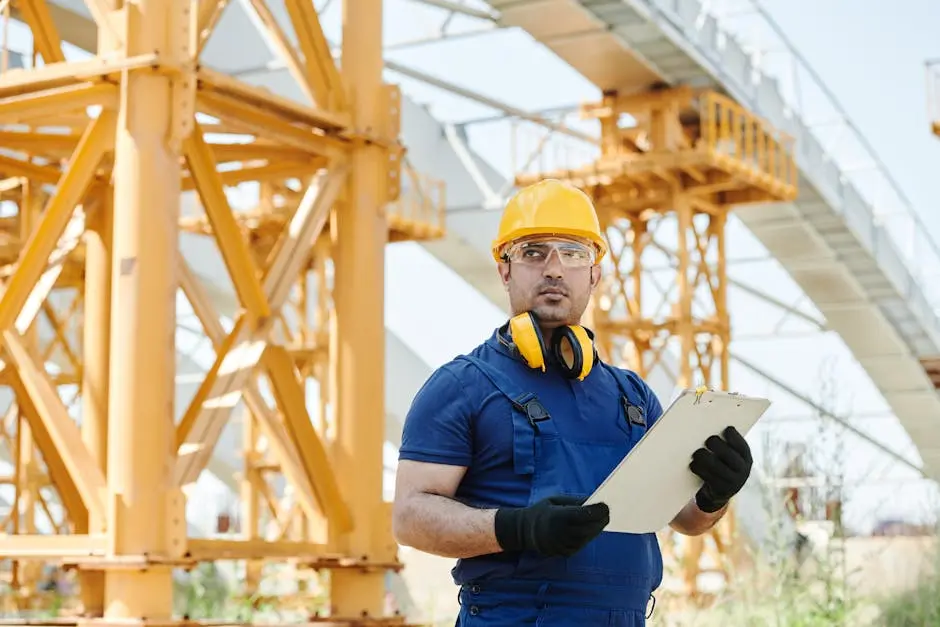Structural inspections are crucial to ensure the safety and longevity of a building. While most inspections aim to confirm that structures are sound, identifying red flags early can save homeowners and investors from costly repairs down the road. This guide will help you understand what warning signs to look out for during structural inspections.
Understanding the Importance of Structural Inspections
Before diving into the red flags, it’s essential to grasp why structural inspections are a key part of maintaining a safe and secure building. These inspections assess the integrity of a structure and help prevent future problems that could compromise safety and value.
Imagine having unexpected repairs or finding out too late about structural issues that could have been avoided with regular inspections. Regular structural inspections serve as a proactive strategy to mitigate these risks. They enable property owners to address small issues before they snowball into larger, more costly problems. It’s akin to having regular health check-ups to catch and treat potential diseases early – a preventative measure that offers peace of mind and long-term savings. Consistent inspections also make you aware of maintenance that may need scheduling in the near future. Knowledge of such needs allows for better planning and budgeting, ensuring the structure remains in prime condition for years to come.
Moreover, conducting thorough inspections can enhance a building’s reputation and marketability, reassuring potential buyers or investors of the building’s soundness. When structural issues are identified and addressed prior to listing a property, it can have a significant impact on sales. Buyers are more likely to make purchase offers when they know a property has been well-inspected and maintained.
Foundation Cracks: What They Indicate
One of the most common red flags during a structural inspection is cracks in the foundation. While small, hairline cracks may be harmless, larger cracks can suggest serious issues that need addressing. We’ll discuss what different types of cracks could mean for the stability of the structure.
Foundation cracks are not only unsightly but can also be a major indicator of structural distress. Horizontal foundation cracks are particularly concerning as they can signal significant structural failure, often related to soil pressure. Vertical cracks, on the other hand, might be due to settling and may not be as severe, yet they still require monitoring. Diagonal cracks, often caused by differential settling, need close evaluation to determine if they’re indicative of uneven loading or moisture-related stress. It’s essential to differentiate between these types and understand when professional assessment is critical. Regular monitoring of cracks and promptly addressing those that widen is crucial to maintaining the integrity of the structure.
Moreover, foundation cracks can lead to moisture intrusion, which can further exacerbate structural damage. Moisture entering through these cracks can cause mold growth and deterioration of building materials. It is vital to seal cracks promptly and manage any underlying causes to prevent recurring issues. Property owners should consider waterproofing solutions and soil assessments to ensure that the foundation remains stable and intact.
Signs of Water Damage and Their Implications
Water damage is a major concern that can lead to severe structural issues. During an inspection, look for signs like water stains, mold, or peeling paint. Understanding how these issues affect the building’s integrity can guide necessary repairs and prevent further damage.
Water can be a building’s worst enemy, often leading to complex and costly repairs. One of the primary red flags is the presence of water stains, which may appear on ceilings, walls, or floors. These stains often indicate leaks, which, if left unaddressed, can cause significant structural weakening. Mold and mildew presence should raise alarms as well, since they can indicate ongoing moisture issues and can be detrimental to indoor air quality. Peeling paint may seem minor but is often a sign of underlying dampness. Inspecting and promptly repairing leaks not only protects the structure but also safeguards the health and well-being of its occupants.
By understanding and addressing water damage, property owners can prevent the domino effect it often triggers. Persistent moisture can weaken the wooden components of a structure, causing rot and structural instability. Moreover, moisture accelerates rust and corrosion in metal elements like beams or fasteners. To prevent such scenarios, it’s crucial to identify and address water intrusion sources—be it from leaks, poor drainage, or inadequate waterproofing. Upgrading insulation and ventilation can also play a role in reducing moisture build-up and preserving structural integrity.
The Role of Rust and Corrosion in Structural Integrity
Metal components, such as beams and reinforcement bars, are common in many structures. Rust and corrosion can weaken these elements over time, posing a significant threat to safety. Recognizing these signs can be vital in preventing irreversible damage.
Rust may seem like a superficial issue at first glance, but it can have profound effects on a building’s structural integrity. Corrosion in metal elements, such as beams or rebar within concrete, can lead to significant weakening and eventual structural failure if not addressed promptly. This underscores the importance of protective coatings and regular monitoring of metal components. Corrosion is often accelerated by environmental factors like humidity and salt exposure, making it essential for those in coastal or humid areas to perform regular inspections. Ignoring rust can compromise the load-bearing capacity of metal structures, leading to catastrophic outcomes.
Maintenance strategies, such as regular inspections and the application of anti-corrosion treatments, can prolong the life of metal components significantly. Owners should also consider moisture barriers and cathodic protection in environments especially prone to corrosion. Consistent assessments and proactive maintenance of metal structures are critical to warding off potentially dangerous situations and ensuring longevity and safety within a building.
Settling and Uneven Floors: A Cause for Concern
Uneven floors might seem like a minor issue, but they can indicate larger problems with the building’s foundation or structural support. Learn how to spot these signs and understand when they should be cause for concern.
When walking through a building, notice if the floor feels uneven or if there are visible slants. While some settling in floors is natural over time, sudden shifts or dramatic slopes might indicate a deeper issue such as foundation problems or compromised structural elements. It’s essential to investigate the cause of uneven flooring as it can affect everything from the building’s aesthetics to its structural integrity. Early detection of floor settling can guide necessary repairs and might prevent escalation of associated problems.
Often, correcting uneven floors involves addressing the underlying cause, which can be as complex as major foundation repair or as simple as addressing a moisture issue. Consultation with professionals can determine the appropriate course of action. By engaging experts early, property owners can avoid future complications, maintain building value, and ensure safe environments.
When to Call in the Experts
Despite the knowledge and vigilance, some issues require professional expertise. Knowing when to call in structural engineers or specialists can be a critical step in maintaining a safe environment. We’ll guide you on when and why you should seek their advice.
Not all structural issues are easily remedied by property owners. Recognizing the limits of DIY fixes and understanding when to call in professionals can save considerable time and money. If you notice severe cracks, significant water damage, or major shifts in structural elements, it’s crucial to consult with engineers or specialists promptly. Professionals have the necessary tools and expertise to assess complex issues accurately and propose effective solutions. Timely intervention by experts can prevent minor issues from becoming insurmountable problems.
Involving experts isn’t just about fixing problems; it’s about leveraging their knowledge to prevent potential future issues. By working with inspection professionals, property owners gain insights into the long-term preservation of their assets. Establishing a relationship with trusted experts can offer peace of mind, knowing that your property is in safe hands, and that any necessary work will meet the highest standards of safety and quality.
Ensuring Safe and Sound Structures
Being aware of these red flags during structural inspections can empower you to make informed decisions about property investments and maintenance. By addressing potential issues early, you can ensure the safety and longevity of your structures while avoiding unexpected and costly repairs down the line.


